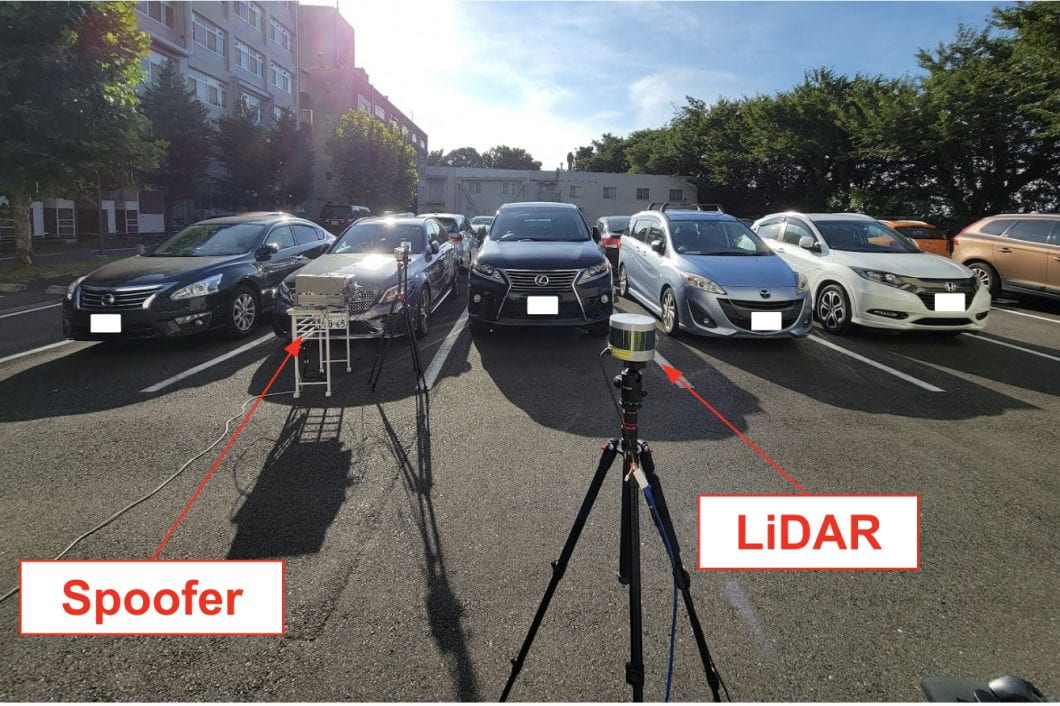A College of California, Irvine-led analysis workforce has demonstrated the possibly hazardous vulnerabilities related to the know-how known as LiDAR, or Mild Detection and Ranging, many autonomous automobiles use to navigate streets, roads and highways.
Laptop scientists and electrical engineers at UC Irvine and Japan’s Keio College have proven the right way to use lasers to idiot LiDAR into “seeing” objects that aren’t current and lacking these which are — deficiencies that may trigger unwarranted and unsafe braking or collisions.
In a presentation immediately on the Community and Distributed System Safety Symposium in San Diego, lead writer Takami Sato, UC Irvine Ph.D. candidate in laptop science, shared the outcomes of a research wherein he and his colleagues investigated spoofing assaults on 9 commercially accessible LiDAR programs, discovering that first-generation and even later technology variations exhibit security deficiencies.
“That is up to now probably the most in depth investigation of LiDAR vulnerabilities ever carried out,” stated Sato. “By a mixture of real-world testing and laptop modeling, we have been capable of provide you with 15 new findings to tell the design and manufacture of future autonomous automobile programs.”
The researchers stated that LiDAR is a most popular navigation and sensing know-how utilized in robotic taxis operated by Google’s self-driving automobile model Waymo and Basic Motors’s Cruise, and it is a vital part in consumer-operated fashions bought by Volvo, Mercedes-Benz and Huawei.
Testing first-generation LiDAR programs, the workforce perpetrated an assault recognized as “faux object injection” wherein sensors are tricked into perceiving a pedestrian or the entrance of one other automobile when nothing is there. On this scenario, the LiDAR system communicates the false hazard to the autonomous automobile’s laptop, triggering an unsafe habits corresponding to emergency braking.
“This chosen-pattern injection situation works solely on first-generation LiDAR programs; newer-generation variations make use of timing randomization and pulse fingerprinting to fight this line of assault,” stated Sato.
However the UCI and Keio College researchers discovered one other solution to confuse next-generation LiDAR. Utilizing a custom-designed laser and lens equipment, the workforce members might conceal 5 present vehicles from the LiDAR system’s sensors.
“The findings on this paper unveil unprecedentedly robust assault capabilities on LiDAR sensors, which may enable direct spoofing of pretend vehicles and pedestrians and the vanishing of actual vehicles within the AV’s eye. These can be utilized to immediately set off numerous unsafe AV driving behaviors corresponding to emergency brakes and entrance collisions,” stated senior co-author Qi Alfred Chen, UC Irvine assistant professor of laptop science.
Becoming a member of Sato and Chen on this mission, which acquired monetary help from the Nationwide Science Basis, have been Yuki Hayakawa, Ryo Suzuki, Yohsuke Shiiki and Kentaro Yoshioka from Keio College in Japan.
